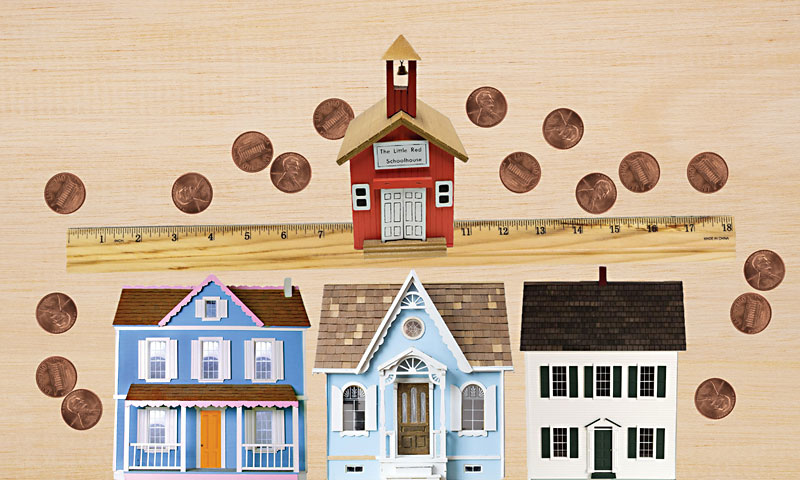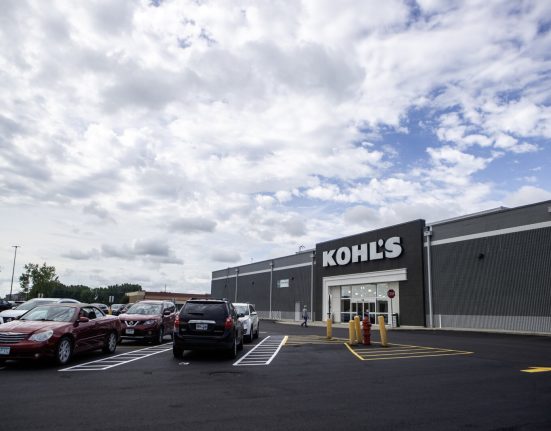
AISD is looking to max out its property tax rate (art by Zeke Barbaro / Maggie Q. Thompson / Getty Images)
If Austin school leaders ask voters to approve a property tax increase in the November election, and if voters do so, most local homeowners will begin paying around $35 a month more in school taxes next year. Not too bad, right? But strange as it may seem, renters will likely pay more.
Austin ISD has been considering a voter-approved tax rate election, or VATRE, for the last two months as part of the solution to the district’s $89 million budget deficit. Increasing the tax rate would boost taxes on all properties in the district, personal and commercial. AISD Chief Financial Officer Eduardo Ramos calculates that changing the rate will generate about $160 million in additional revenue. However, because of the state’s complicated school funding laws, only about $40 million of that revenue would stay in the district. The rest would actually flow out, for use by the state. This dynamic is clearly concerning to the district, but the board of trustees is still expected to put the VATRE on the November ballot.
The impact of an additional $40 million for the district is clear: It would help pay teachers and prevent school closures. But if every home in Austin costs a little more this time next year, how would that impact renters?
If voters approve the VATRE, the district’s school property tax rate will rise from roughly 86 cents for every $100 in taxable value to about 93 cents per $100. However, people who live in the home they own will pay less than landlords, because they are able to deduct their homestead exemption, which reduces the taxable value of a home by $100,000.
Here’s how that pencils out: With the proposed tax rate, an Austin homeowner living in a median value home (worth $563,069) would now pay $4,300 annually, or about $26 more per month than they currently pay. Because landlords can’t use the homestead exemption, they would pay $5,229 for the same house, or $32 more per month.
Landlords generally aim to profit from rentals, and that means passing on costs. “Increasing expenses impact market rents,” Chris Newton of the Texas Apartment Association told The Texas Tribune after the Legislature increased the homestead exemption last summer. He pointed out that property taxes are the No. 1 expense for landlords.
“I’ve got to look at the whole picture of a taxpayer.”
– Education Austin President Ken Zarifis
Research on office space rentals demonstrates this passing of cost burden: A study in Massachusetts found that over 30 years, landlords generally raised rent to fully absorb changes in tax payments. (And in downtown Boston, where office space was in high demand, landlords overcompensated. For every dollar increase in tax payments, rent increased between $1.06 to $1.39.)
According to the U.S. Census Bureau, less than half of Austin homes are owner-occupied. Harvard researchers recently estimated that about half of Austin renters are living in homes they can’t afford. So we asked AISD if the district is concerned that a tax rate increase could hurt low-income renters.
“We cannot assume what a landlord will do with their rental rates [if a VATRE passes] given that these rates are dictated not only by property taxes but the rental market and supply and demand,” a district spokesperson told us.
Education Austin, the union made up of AISD’s teachers and staff, is supporting the VATRE, despite reservations about the percentage of tax proceeds that will stay in the community. Union President Ken Zarifis said raising the rate is the only way out of the bind that Texas politicians put the district in by not properly funding public education. Zarifis is concerned about the impact higher rents could have on economically disadvantaged families but said raising taxes would be a trade-off: Families might have to pay more in rent, but ensuring the health of their children’s schools benefits them economically, because the schools teach and feed their children while they are at work.
“I’ve got to look at the whole picture of a taxpayer,” Zarifis said. “But at the end of the day, my biggest concern is about our children, the schools they attend, the people that help support them, and the 11,000 employees in Austin ISD that support 76,000 students.”






